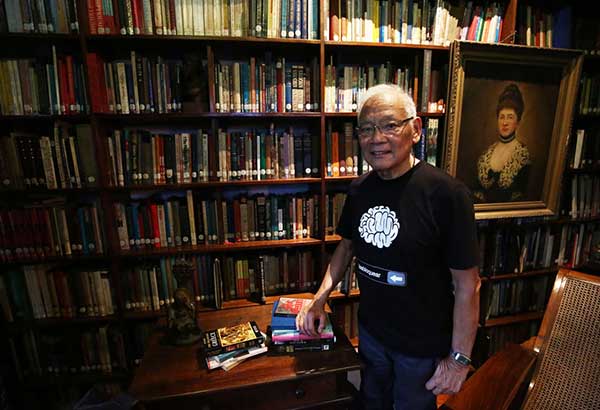Art Investments
JAIME LAYA: Stories, Memories and Collecting Contemporary Art in the Philippines
The Philippines already had a thriving art scene in the late 1970s and early 1980s, with a few galleries catering to art enthusiasts, collectors, and investors. There were only a few commercial art galleries at the time, such as Sining Kamalig in a Pasay compound owned by the Araneta sisters and curated by Eva Toledo, the Hiraya Gallery on United Nations owned by the late Didi Dee and curated by the late social activist Bobby Valenzuela, the Liongoren Gallery in New Manila owned by painter Alfred Liongoren and his late wife Norma Crisologo- Liongoren, and finally, the galleries at the They were pioneers in assisting Filipino artists in exhibiting and marketing their work.
It was in the 1970s that the elite began to collect Filipiniana and antique porcelain. With the interest in Filipiniana art and antiquities came an increased interest in collecting contemporary Filipino artists. Many fake antiques and master paintings floated around. Furthermore, the interest in santos (saints) has resulted in the theft of religious images from churches throughout the Philippines. Some of these santos were discovered and returned. Others were never discovered and are most likely still in the vaults or shelves of major art collectors.
During the 1960s and 1970s, the technocrat turned art collector began his foray into collecting. Jaime “Jimmy” Laya, a banker, former UP professor and Dean of the UP College of Business Administration, and former Central Bank Governor, has had a passion for collecting since he was a child, when he collected postage stamps and coins. He became obsessed with thrift stores while a graduate student in California. He became more interested in history. As he advanced in his career, he began collecting more antiques and paintings by Filipino masters such as HR Ocampo, Jaime de Guzman, and Carlos Valino, to name a few. He was fortunate that his mother was Fernando Amorsolo’s wife’s cousin. His mother, Amorsolo’s wife, gave Laya an Amorsolo painting depicting farmers eating their dinner in the early evening light for his wedding.
With his academic business background, Laya is obviously a numbers guy. However, as a collector, Laya is more concerned with stories and memories than with numbers, monetary values, or ROI (return on investment). He is intrigued by the stories that surround the artwork and the painter. He is sensitive to the memories that these art objects and paintings arouse in him. He purchased an aparador to remember his grandmother. He purchased several paintings because he was intrigued by their backstories. Perhaps his interests in stories and history stem from his family background. His father taught English, while his mother taught history. Both of these subjects, rather than his business background, were major influences on his approach to collecting and investing in art.

The storyteller in him inspired him to write a glossy book, “Hidden Treasures, Simple Pleasures,” with two other art collector friends, Mariano Lao and Alberto Bravo. They chose favorites from their collections. Laya wrote a story, history, and background on how he came across each piece of art in his collection.
Many years have passed, and this collector is now in his golden years. He is still amused by new things. He recently developed an interest in the “bulol,” or rice gods. He had 15 pieces in his collection within a few months. Laya is still perplexed as to what draws him to a piece enough for him to buy it and take it home. According to him, the fascination could be emotional or intellectual. Laya continues, “If I see something that looks nice. If it brings back pleasant memories. If it appears to be better than something else. If it’s something you’ve been thinking about for a long time.”
It’s fascinating to pick the brain of a famous, iconic collector who not only collected for himself but was also instrumental in acquiring important art pieces for the Philippine government’s collection. He gathered with his right brain—his heart—for a left brain person. Jaime Laya’s major lesson in collecting and investing in art is to buy what touches your heart. Buy what you want and what makes you happy. Do not purchase art solely for the purpose of recouping your investment or appreciating its monetary value. That will happen in due course. What matters is that when you see this artwork or art object every day, it brings you joy, amuses you, delights you, and makes you smile.

